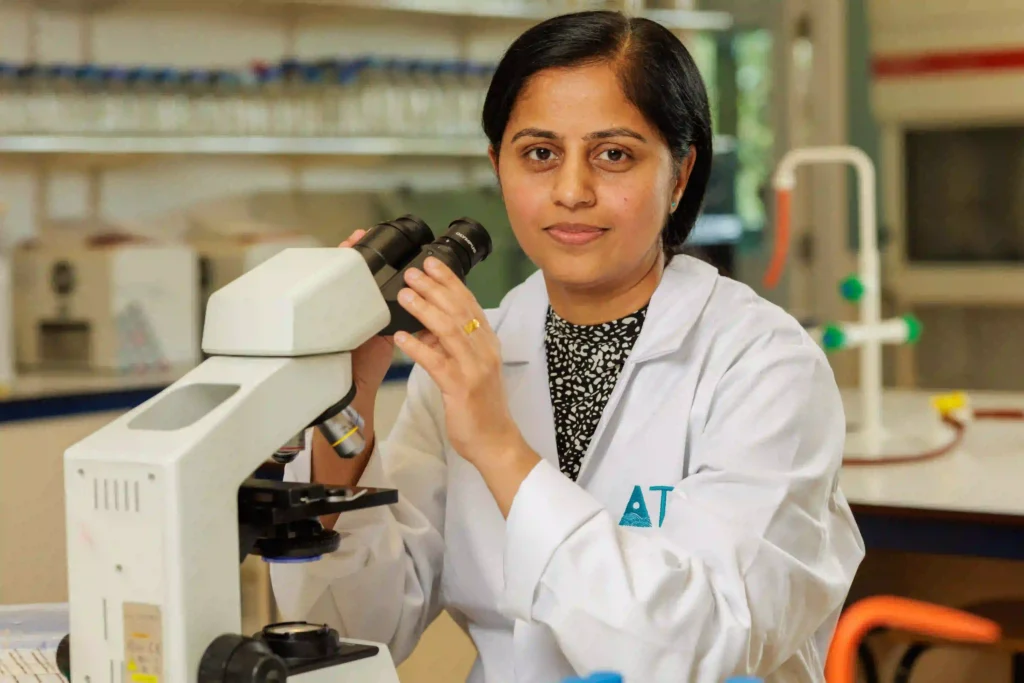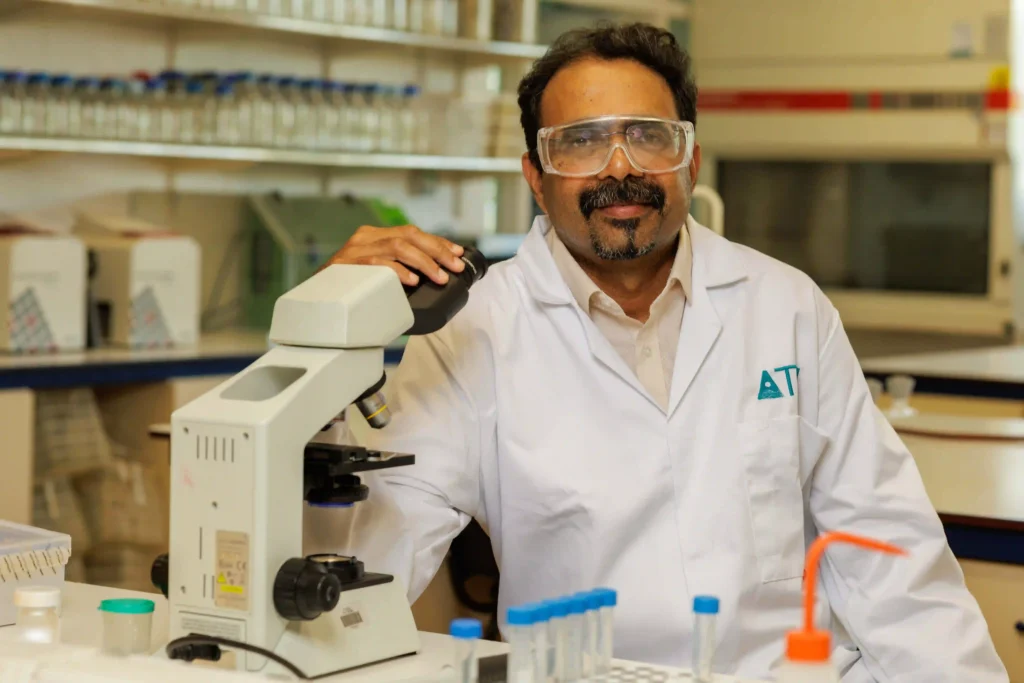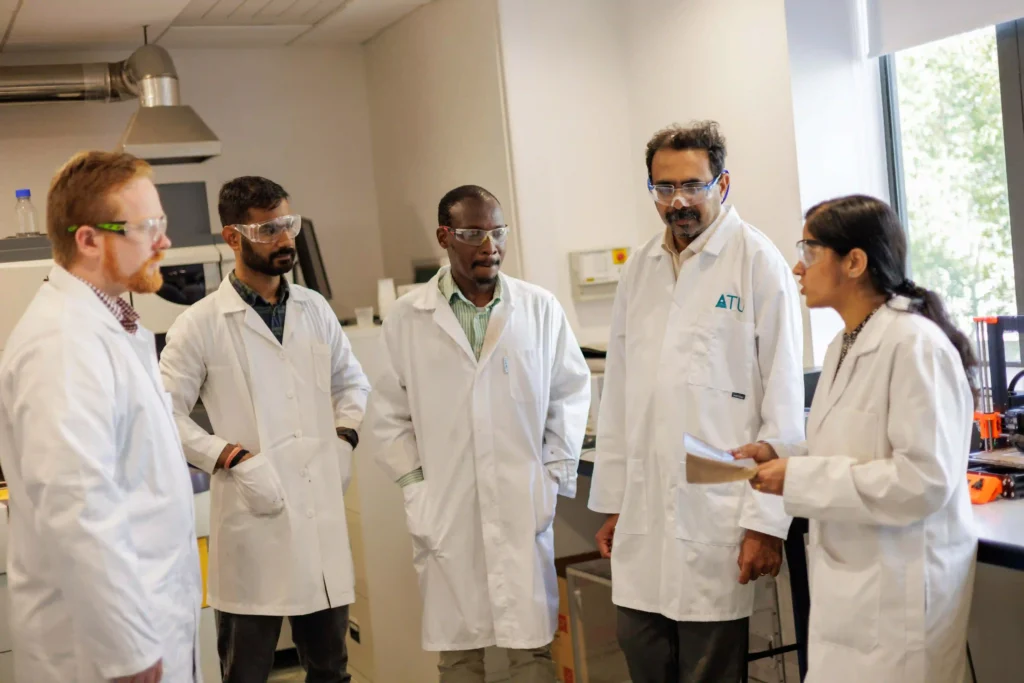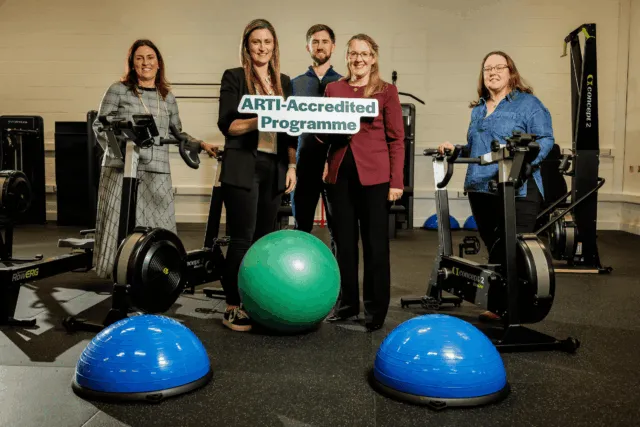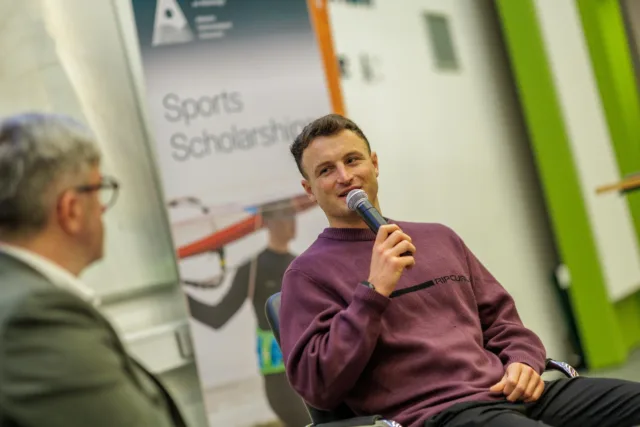Courses
ATU Researchers Pioneer Breakthrough in 3D-Printed Wearable Energy Harvesting Technology
ATU researchers developed a method to 3D print energy-harvesting polymers onto textiles, enabling durable, washable, self-powered wearable electronics for real-world applications.
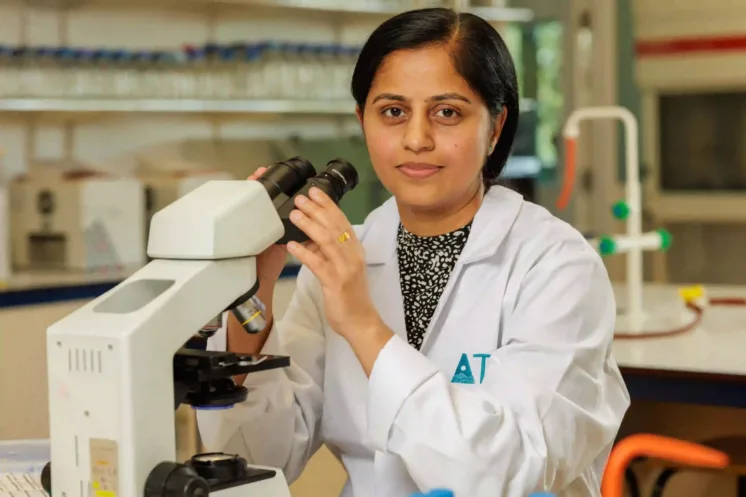
Researchers at Atlantic Technological University (ATU), of the Nanotechnology and Bioengineering research division, have developed a new method for directly 3D printing functional polymer materials onto stretchable textiles. The research is led by Dr Aswathy Babu and a multidisciplinary team of researchers supervised by Prof Suresh C. Pillai.
The work was carried out in collaboration with the University of Glasgow, Heriot-Watt University, PEM Technology Gateway Centre, ATU, and I-Form, the Research Ireland Centre for Advanced Manufacturing at University College Dublin.
This cutting-edge innovation overcomes long-standing challenges associated with high-temperature processing and weak interfacial bonding between polymers and fabrics, unlocking new possibilities for next-generation wearable energy harvesting systems. This work was published in the journal Nano Energy in June 2025.
This innovation directly addresses several key limitations in the field: it eliminates the need for adhesives or complex multi-step processes, achieves excellent adhesion between the 3D-printed polymer and textile, and delivers robust triboelectric performance. The fabricated devices show high output voltage and current, superior durability, and real-world functionality, including the ability to power small electronic devices and enable IoT-based touch sensing. These properties make the technology ideal for applications in wearable health monitoring and environmental sensing.
The team’s breakthrough centres on the fabrication of textile-based triboelectric nanogenerators (T-TENGs), capable of converting mechanical motion into usable electrical energy. Using a low-cost fused filament fabrication (FFF) 3D printing technique, the researchers successfully deposited polypropylene (PP)—a triboactive thermoplastic—onto conductive, flexible fabrics. The result is a mechanically robust, finely patterned surface that enables strong dielectric-fabric adhesion and exceptional triboelectric performance.
Professor Suresh C. Pillai, Irish Principal Investigator of the RI-EPSRC project and Head of the Nanotechnology and Bioengineering Research Group at ATU, said; “This is a significant milestone in wearable energy technology. Our direct 3D printing technique creates a highly uniform and intimate bond between the dielectric polymer and the fabric electrode. This interface quality is crucial for boosting energy conversion efficiency. Through advanced surface patterning and multilayer optimisation, we’ve significantly enhanced triboelectric output compared to traditional fabrication methods.”
This research provides a scalable and cost-effective route to integrate energy harvesting technologies into everyday clothing
Lead researcher, Dr Aswathy Babu added; “This research provides a scalable and cost-effective route to integrate energy harvesting technologies into everyday clothing. By leveraging low-cost 3D printing and achieving strong bonding between polymer and fabric, we have enabled the development of washable, stretchable, and high-performance energy generators suitable for real-world applications.”
This research is part of a €1.5 million collaborative project funded by Research Ireland (formerly SFI) and the UK Engineering and Physical Sciences Research Council (EPSRC). The consortium is led by Prof Daniel Mulvihill of the University of Glasgow, and includes researchers from ATU, Tyndall National Institute, and Heriot-Watt University, UK. The project’s overarching goal is to harness human motion as a renewable energy source using triboelectric nanogenerator (TENG) technology—an eco-friendly and sustainable energy harvesting approach.
The resulting T-TENGs are not only highly efficient but also flexible, durable, washable, and scalable—key attributes for real-world deployment. Demonstrating their practical applicability, the team successfully integrated these energy harvesters into an IoT-enabled adaptive touch sensing system, pointing to immediate potential in domains such as smart wearables, real-time health monitoring, soft robotics, and environmental sensing.
“This work marks a pivotal step toward the development of truly self-powered wearable electronics,” added Prof. Suresh C. Pillai. “By combining material science, additive manufacturing, and IoT integration, we’re laying the groundwork for a new generation of sustainable, user-friendly, and intelligent devices capable of real-time data tracking and wireless connectivity.”
Congratulating the research team, ATU President, Dr Orla Flynn said; “I want to commend Prof Suresh C. Pillai, Dr Aswathy Babu, and the wider research team for their ambition and dedication in addressing real-world challenges through applied science. Their work in wearable technology highlights the potential of smart materials to transform how we monitor health, interact with our environment, and power the devices we use every day.”
The research sets the stage for commercial-scale production of customisable, self-sustaining electronic textiles for wearable electronics. It opens new horizons in energy-autonomous devices that respond and adapt to their users and environments.
